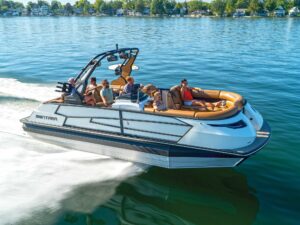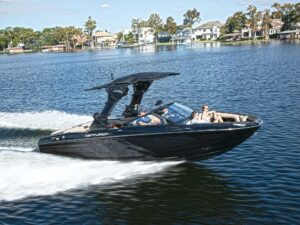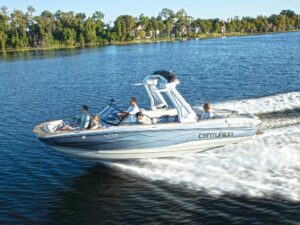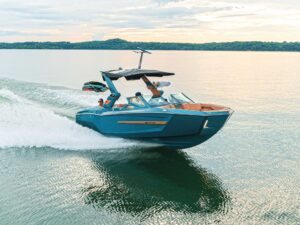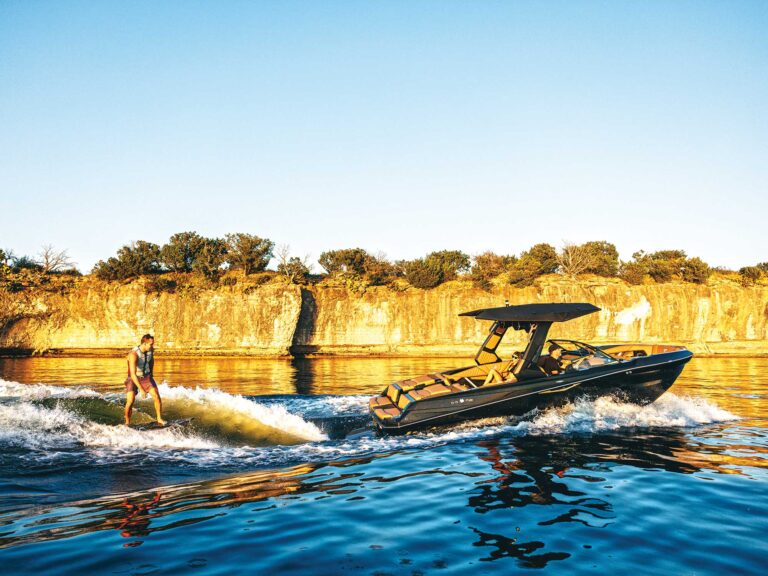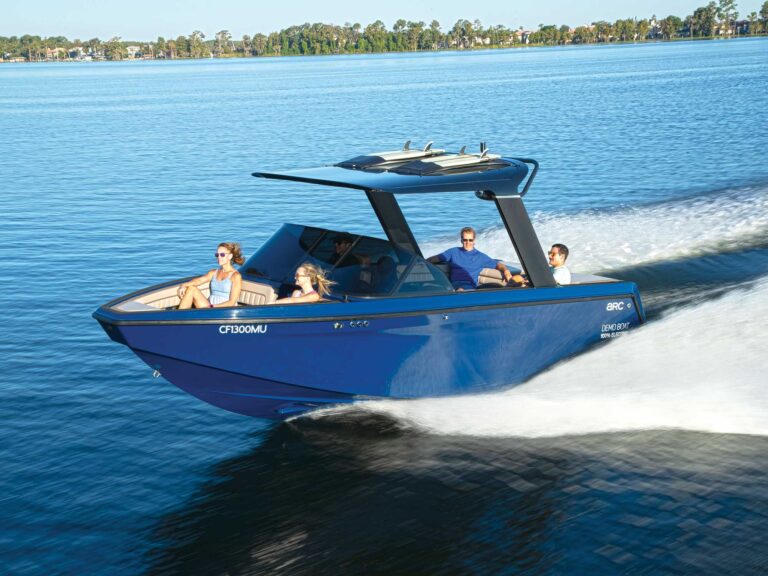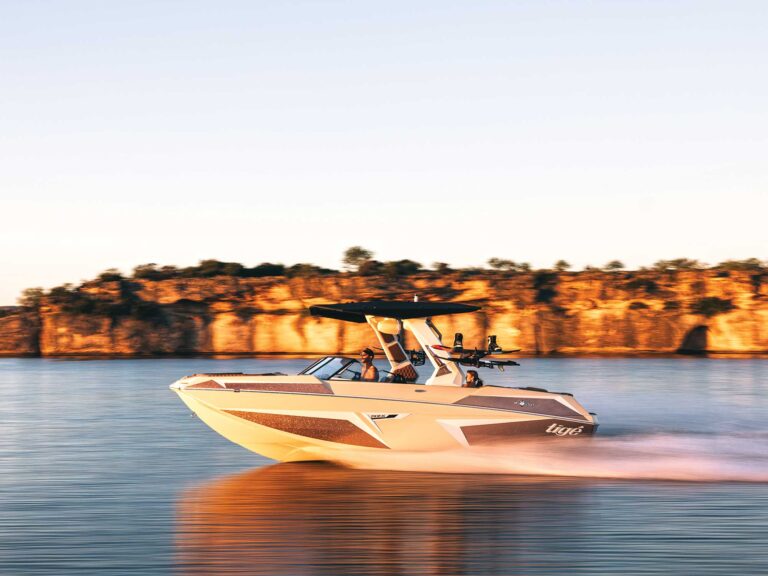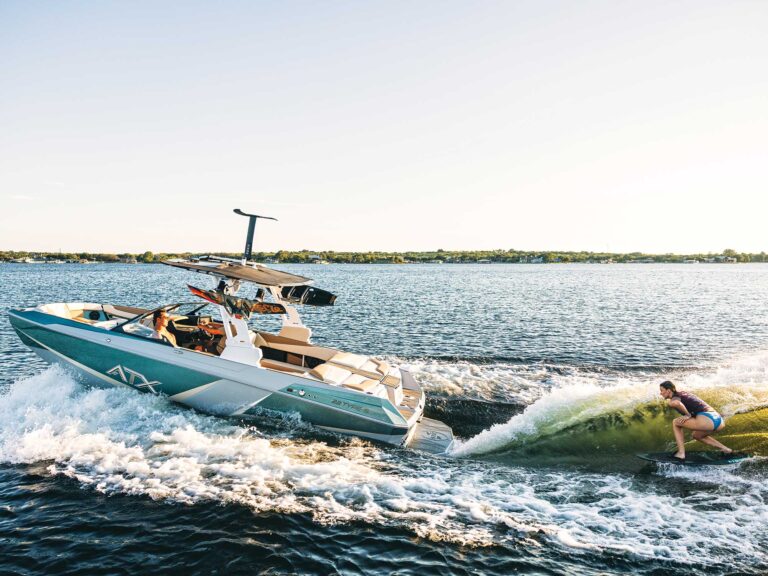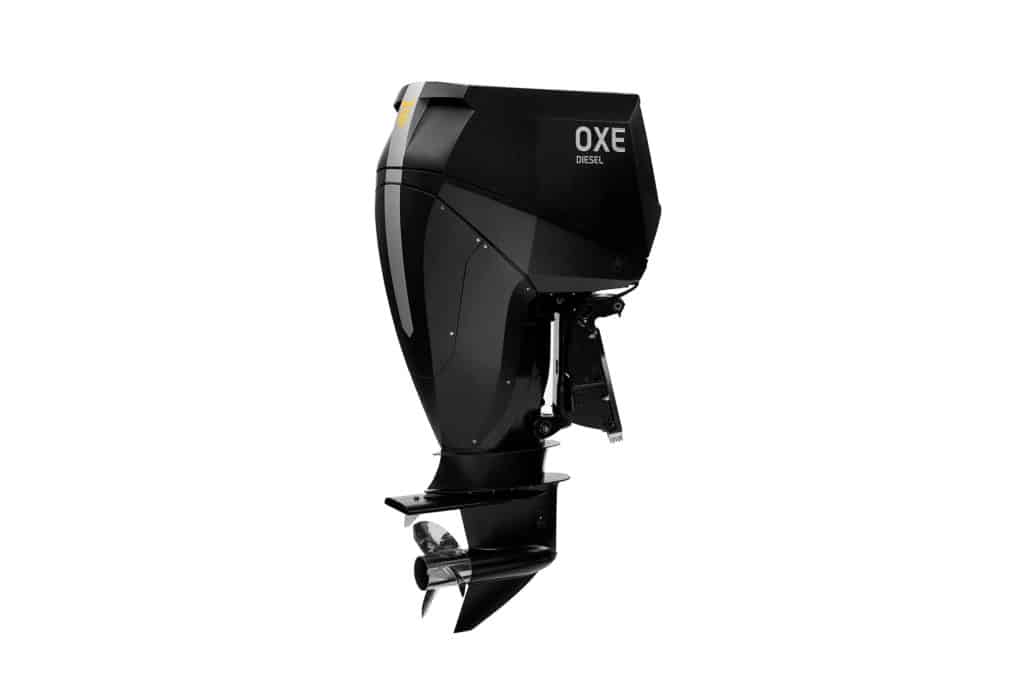
It’s no accident that Cimco Marine, the Swedish company building this new diesel outboard, named it OXE. That is the Swedish word for ox, the farm animal known historically for taking on incredible workloads. In building the new OXE outboard diesel, Cimco hopes to provide a rugged new outboard option that can handle thousands of hours of duty on workboats—but that also has recreational appeal. Think yacht owners looking to run the same fuel through their tenders or boaters looking for increased fuel economy and durability in their outboards.
The OXE is based on a 2L GM automotive diesel normally found in the European Opel line of cars. It is a common-rail, turbo-charged, freshwater-cooled engine turned horizontally to work in a marine outboard design. The key to the OXE is its patented belt drive system, which replaces traditional bevel gears with a twin belt system in order to better handle the higher-generated torque and to allow for a smaller, slimmer lower unit. One of the most intriguing aspects of the engine is its low-speed control, which is a clutch system that allows for seamless shifting between forward-neutral-reverse.
I had the opportunity to test a 150-hp OXE with a 25-inch shaft mounted on a 23-foot Highfield RIB, as part of a demonstration through Mack-Boring, the east-coast distributors for the U.S. We ran the boat with two adult males aboard and 27 gallons of fuel. One of the first things I noticed was how smooth and quiet the engine was at 900 rpm in forward idle. The reading of 63-dBA on my soundmeter confirmed that my preconceived notion that the engine would be a loud vibrating beast was way off. The second thing that surprised me was the OXE’s nimble performance. We climbed on to plane in 3.5 seconds and hit 30mph in 7.5 seconds en route to a top speed of 37.5 mph.

Here’s the most impressive number from our collected data: At that top speed, while turning 4300 rpm, we burned just 9.6 gph. That translates into 3.9 mpg, an excellent efficiency number. By comparison, a typical 150-hp four-stroke gasoline outboard would push a similarly-sized boat to that speed at around 5500 rpm, burning about 13-14 gph, and averaging out to about 2.6 mpg. (These numbers are averages based on performance bulletins from a few different gasoline outboard manufacturers.) So there’s a definite jump in efficiency. Not to mention that, while the gasoline outboards can crank up to hire RPM and faster speeds, diesels traditional can run for much longer at WOT or near-WOT.
While running at slow speeds, I put the seamless-shifting through its paces and came away impressed. This will make close-quarters handling where the captain need to constantly shift between forward and reverse a non-issue.
Read Next: More Boat Engine Tests
So what’s the catch here? There are two numbers to take into account when considering the OXE diesel. The first is weight:150-hp version that we tested tips the scales at 675 pounds, comparable to the weight of a 300 hp four-stroke gasoline outboard. The second is cost: Mack Boring shared a suggested retail price around $45,000, which is around the times the cost of a 150-hp gasoline outboard. Also keep in mind that as of press time, according to the US Energy Information Administration, the cost of diesel was about 30 cents more per gallon than gasoline in some states.
For people putting serious hours on their engines, the durability and fuel economy will pay off over time. And for yacht owners looking to outfit their tenders with outboards that burn the same fuel as the mothership, the OXE could be a perfect fit.

